The Postman Always Rings Twice (1946)
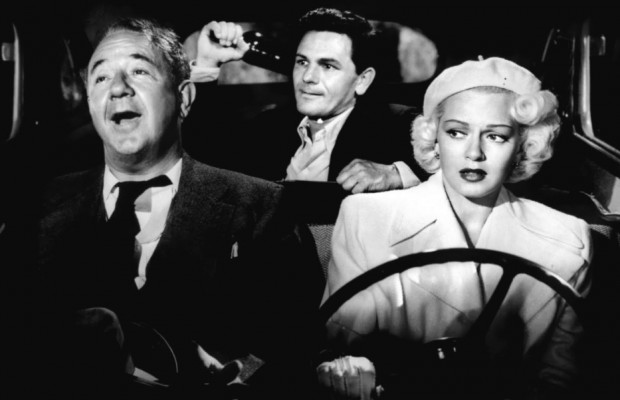
Toronto Film Society presented The Postman Always Rings Twice (1946) on Monday, January 31, 1983 in a double bill with The Blue Dahlia as part of the Season 35 Monday Evening Film Buffs Series “B”, Programme 6.
Production Company: Metro-Goldwyn-Mayer. Producer: Carey Wilson. Director: Tay Garnett. Screenplay: Harry Rushing and Niven Busch, from the novel by James M. Cain. Art Direction: Cedric Gibbons, Randall Drell. Music: George Busserman. Director of Photography: Sydney Wagner. Editing: George White.
Cast: John Garfield (Frank Chambers), Lana Turner (Cora Smith), Cecil Kellaway (Nick Smith), Hume Cronyn (Arthur Keats), Leon Ames (Kyle Sackett), Audrey Totter (Madge Garland), Alan Reed (Ezra Liam Kennedy), Jeff York (Blair), Charles Willaims (Doctor), Cameron Grant (Willie), Wally Cassell (Ben), William Halligan, Morris Ankrum (Judges), Garry Owen (Truckdriver), Dorothy Phillips (Nurse), Edward Earle (Doctor), Byron Foulger (Picnic Manager), Sondra Morgan (Marion), Dick Crockett (Reporter), Frank Mayo (Bailiff), Tom Dillon (Father McConnell), James Farley (Warden).
Audiences who have not seen this film before will have to wait until the final scene for the explanation of the strange title. At the end, though, the title’s meaning, and its irony, become crystal clear–which is more than can be said for Bob Rafelson’s remake a couple of years ago, starring Jack Nicholson and Jessica Lange.
Viewers of the newer film should enjoy comparing it with Tay Garnett’s 1946 production.
The most obvious difference, of course, is the blatant sexuality of the 1981 version, made possible by a tremendous loosening of censorship restrictions. Whether this made it a better movie is a matter of opinion–if nothing else the determinedly unromantic sex scenes reinforced the view that sex was the only thing which brought this unappealing couple together.
Another difference with tonight’s film is the contemporary (mid-1940’s) setting, compared to the 1934-setting in James M. Cain’s novel, and the later film. By doing away with the depression-era hopelessness, some of the punch is taken away from the film.
In terms of sexuality, though, the scene in which Lana Turner removes her robe, to stand in a stunning two-piece bathing suit beside the muscular John Garfield (in a pair of bathing trunks) has more impact than the explicitness of the newer version.
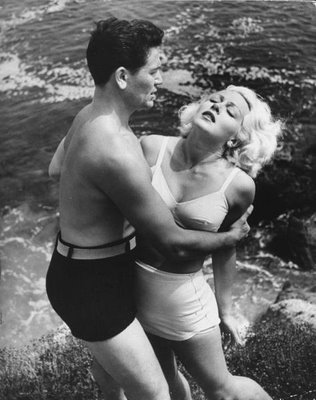
Director Garnett created an ironic visual effect by having Lana Turner appear in either virginal white clothing or completely black outfits, and had her hair bleached platinum blonde. Turner’s eerie whiteness was quite effective when contrasted to Garfield’s dark, brooding features.
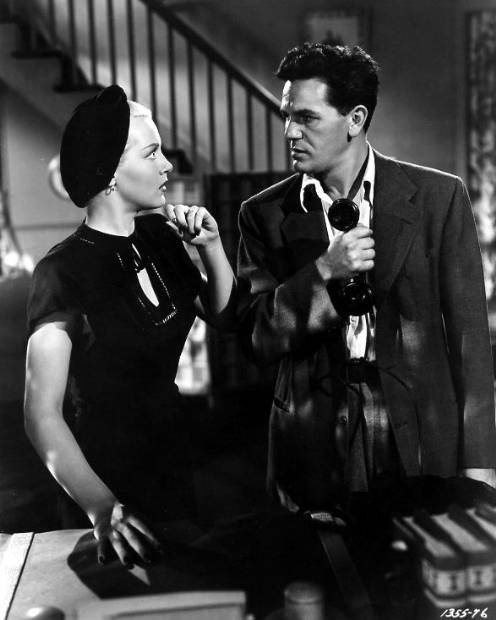
The two of them produced a kind of electricity, a repressed tone of sexuality which carried much of the mood of the picture. The scene at the beginning, wherein Garfield, sitting int he diner, looks up and sees Turner in her stunning white outfit for the first time, is a classic.
Garfield, who was on loan from his home studio of Warner Brothers, was playing a familiar role, that of the tough, chip-on-his-shoulder drifter. A former New York stage actor, Garfield is on of Hollywood’s tragedies. He died of a heart attack at 39 in 1952, possibly as a result of being blacklisted during the McCarthy witch-hunts.
British actor Cecil Kellaway is memorable as Turner’s middle-aged husband, grinning manically. Hume Crony, gives an oily performance as a conniving lawyer–the London, Ontario-born actor had made his screen debut three years earlier as the jabbering, tiresome Herbie Hawkins in Hitchcock’s Shadow of a Doubt.
In its basic content and style, Postman is a classic Film Noir, with its story of a femme fatale ensnaring a man in a web of deceit and murder. Films with similar themes include Double Indemnity, The Killers and Crisscross, the latter two starring Burt Lancaster. Another familiar device is that of having the protagonist, (Garfield), relate the story in a flat, world-weary voice.
Irony is another frequent inhabitant of the world of Film Noir. After Frank and Cora have reached their goal, their passion becomes strained and corrupted beyond repair. The conspirators begin to mistrust each other, first in small ways at first, and end up locked in a fierce battle of wills, their passion turned to hatred.
Although the story of Postman is a familiar one, one can still watch with horrified fascination as Garfield moves steadily towards the destiny prescribed for him by Fate.
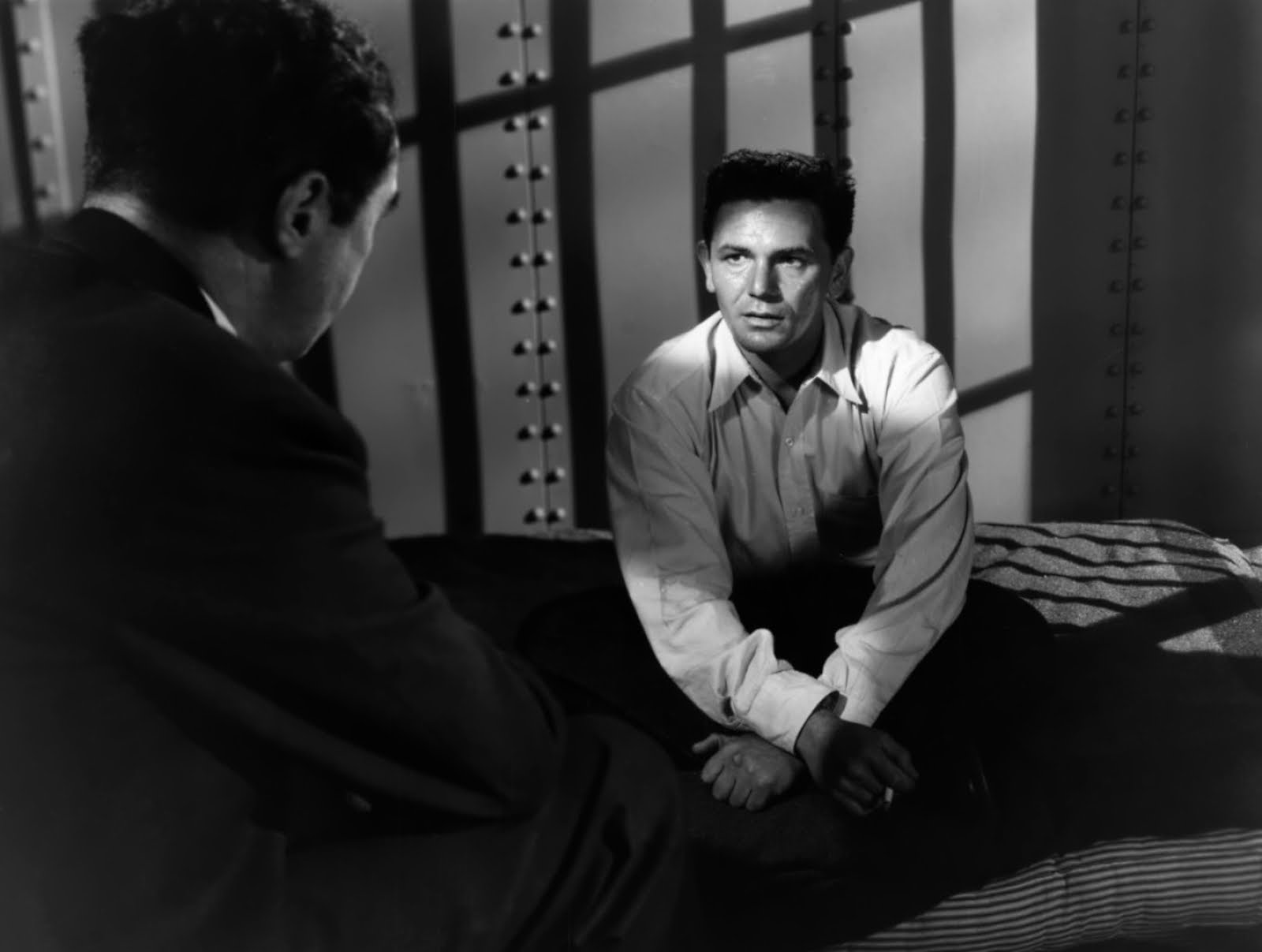
In the unique atmosphere it created, Film Noir was typically a 1940’s genre, and perhaps is the one most strongly associated with the era.
Notes by John Thompson

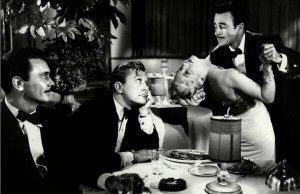
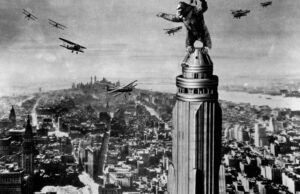
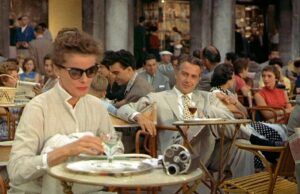






Leave a Reply